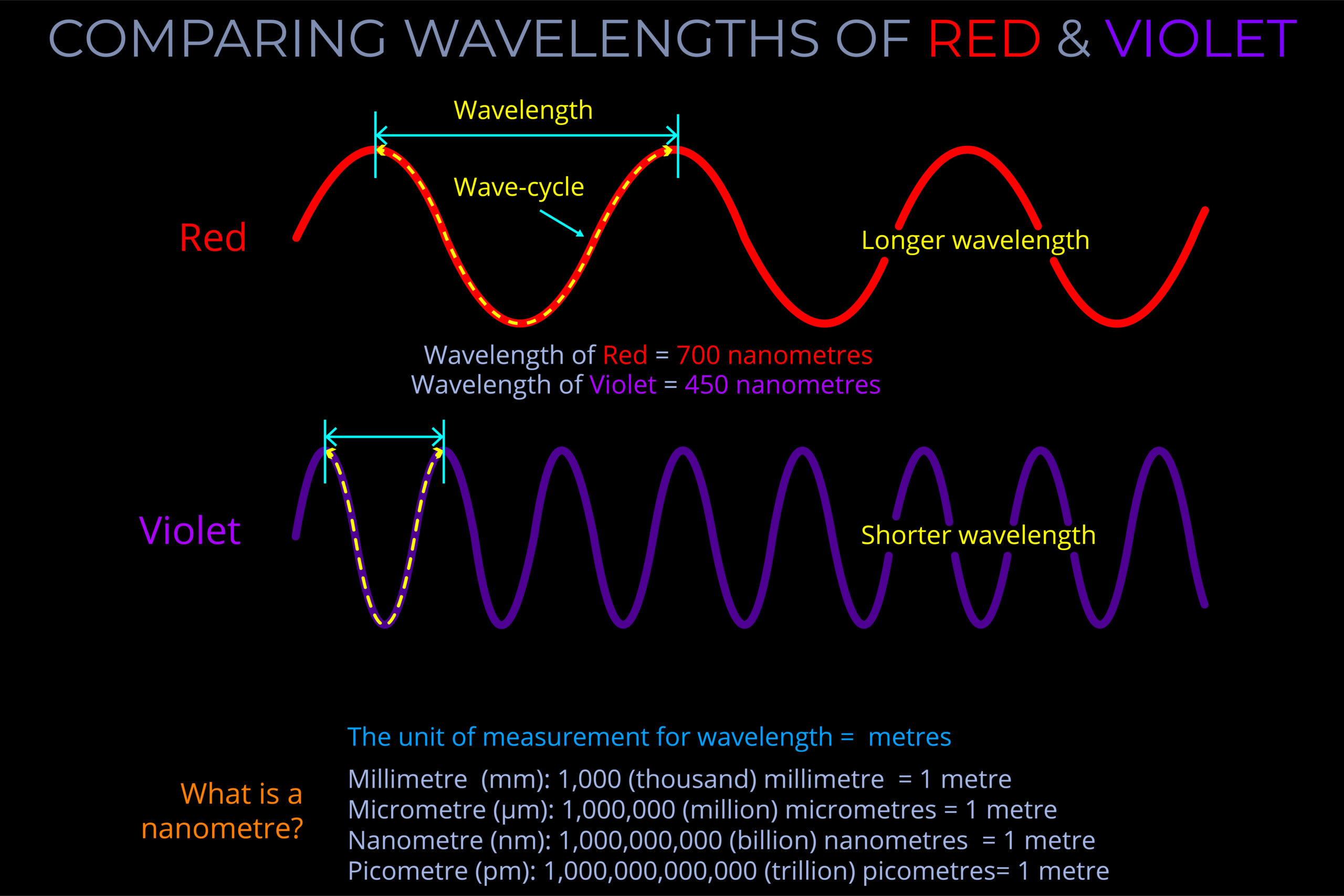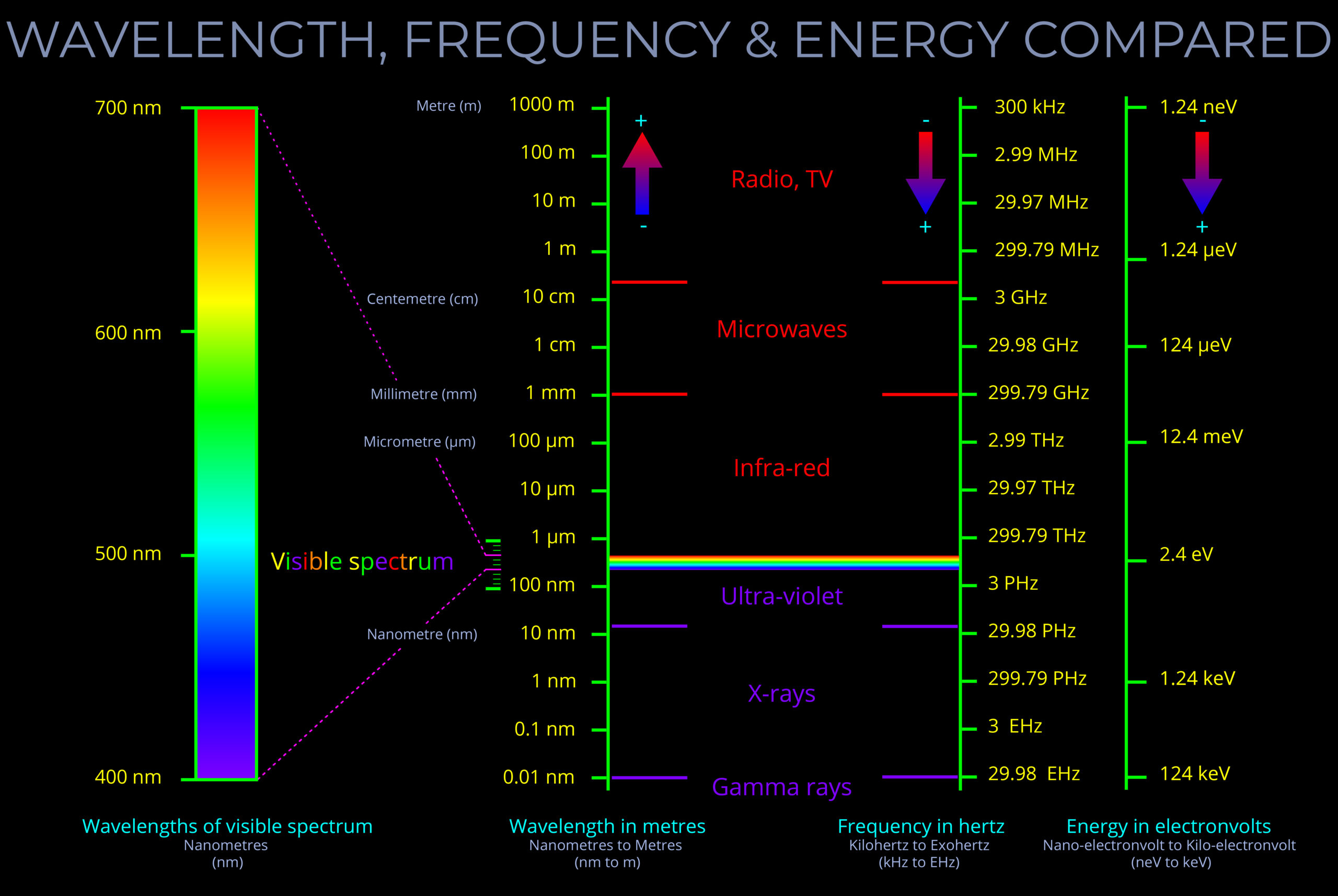A crest is a point on a wave with the maximum value of upward displacement within a wave-cycle. A trough is the opposite of a crest, so the minimum or lowest point in a wave-cycle.
- On a wave at sea, the crest of a wave is a point where the displacement of water is at a maximum. A trough is the opposite of a crest, so a trough is a point where the displacement of the water is at a minimum, meaning the lowest point of the wave.
- In an electromagnetic wave, the terms “crest” and “trough” refer to points of maximum and minimum values of the wave’s oscillating fields. A crest corresponds to the maximum value (in the positive or negative direction), and a trough corresponds to the minimum value (in the opposite direction).
- So electromagnetic waves consist of oscillating electric and magnetic fields that are perpendicular to each other and to the direction of wave propagation.
- Wavelength (λ): It is the distance between two consecutive points that are in phase on the wave, such as from crest to crest or trough to trough. This distance represents one complete cycle of the wave.
- Frequency (f): It is the number of wave cycles that pass a specific point per unit of time, typically measured in hertz (Hz), where one hertz equals one cycle per second.
- Energy: The energy carried by a wave is related to both its amplitude and frequency.
- For mechanical waves (like water waves or sound waves), the energy is proportional to the square of the amplitude. This means if you double the amplitude, the energy increases by a factor of four.
- For electromagnetic waves, the energy is directly proportional to the frequency. Higher-frequency waves (like X-rays) carry more energy than lower-frequency waves (like radio waves).
- A crest is a point is A crest is the highest point of a wave within a wave-cycle. A trough is the opposite of a crest, so the the lowest point of a wave in a wave-cycle.
- On a wave at sea, the crest of a wave is a point where the displacement of water is at a maximum. A trough is the opposite of a crest, so a trough is a point where the displacement of the water is at a minimum.
- In the case of an electromagnetic wave which has an electric and a magnetic axis, a crest on either axis refers to maximum oscillation in the positive direction whilst a trough refers to minimum oscillation.
- Wavelength refers to a complete wave-cycle from one crest to the next, or one trough to the next.
- Frequency refers to the number of wave-cycles that pass a given point in a given amount of time.
- The amplitude of a wave is a measurement of the distance from the centre line (or the still position) to the top of a crest or to the bottom of a corresponding trough.
- Amplitude is related to the energy a wave carries. The energy a wave carries is related to frequency and amplitude. The higher the frequency, the more energy, and the higher the amplitude, the more energy.


